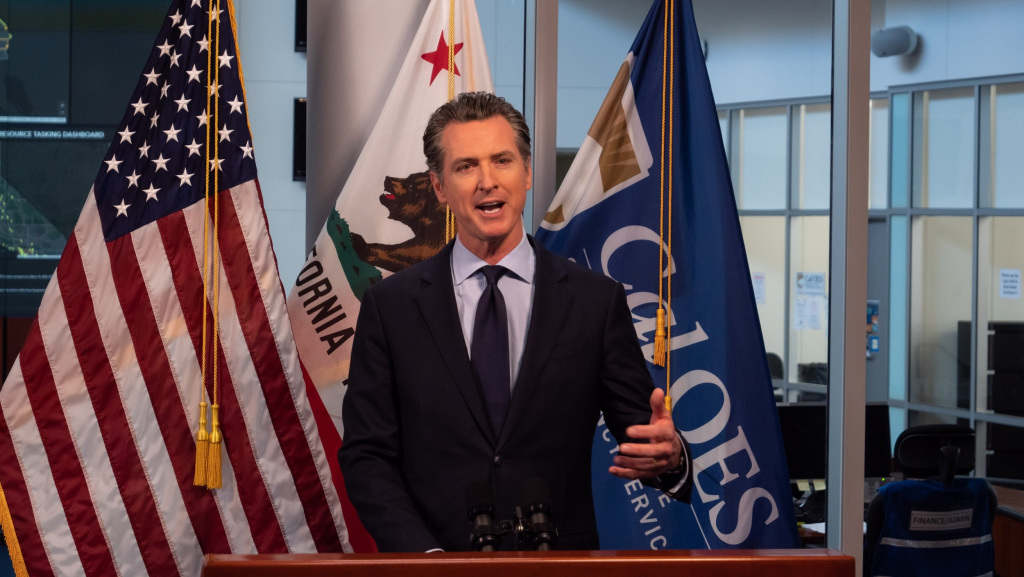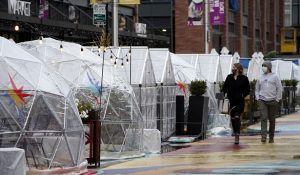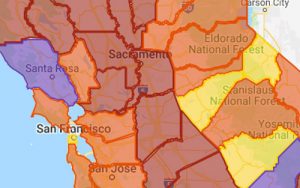Four more Bay Area counties have progressed into the next economic reopening tier, potentially paving the way for more businesses to reopen across virtually the entire region — even as Gov. Gavin Newsom cautioned a modest increase in the state’s coronavirus numbers.
Santa Cruz, San Mateo, Contra Costa and Marin counties each moved from the red or “substantial” tier to the orange or “moderate” tier, joining Santa Clara, Alameda and Napa counties. Last week, San Francisco became California’s first major county to advance into the state’s least-restrictive yellow reopening tier.
While state officials applauded the movement as “progress” toward reopening schools and businesses, they also warned of a statewide rise in infections. With about 4,420 new cases reported daily, California is averaging about 43% more cases now than it was two weeks ago, and infection spikes have hit almost ever population center. After hitting an all-time low of 2.4% last Monday, the state’s positivity rate has since crept up to about 3.2%, according to state data.
“We do have a number of counties who we are concerned about moving back in the future,” Health and Human Services Director Dr. Mark Ghaly said. “We’re working closely with their public health teams and other leaders in their counties to ensure that we’re digging into the data … to make sure transmission is reduced as far and as much as possible.”
The state’s orange tier allows churches to up capacity to 50% or 200 people, whichever is fewer, and allows for amusement parks to open at 25% capacity, among other businesses. But counties may keep tighter restrictions.
Overall, nine counties are purple tier, with 22 in red, 17 in orange and 10 in yellow, most of which are rural and sparsely populated, excepting San Francisco. Glenn and Mendocino counties moved from the lowest purple tier to the red tier, while Calaveras moved from orange to the least-restrictive yellow tier. In Southern California, Los Angeles, Riverside, San Bernadino and Imperial counties — which have long been a statewide epicenter of the virus — remain in the purple tier.
State officials meanwhile announced a multi-state working group Tuesday that pledges to independently review any COVID-19 vaccine approved by the federal government. Made up of academic and scientific experts from epidemiological and ethics fields, the group is a joint effort between California, Nevada, Oregon and Washington, which also teamed up back in May to pressure the federal government for about $1 trillion in aid to states.
Last week, the governor said that most Californians are unlikely to have access to a vaccine until late 2021 — even if it’s approved within the next few months. When asked Tuesday if the working group could delay that process further, Newsom promised it would not.
“We’re going to make sure that we are objectively reviewing and being able to put our stamp of approval,” Newsom said. “Why California? There’s no other state more abundant in terms of our expertise … We’d be foolhardy not to take advantage of some of the world’s, not just this nation’s, experts.”



















